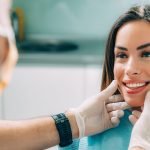Toothbrush Storage 1.0
If you do everything you can to keep your teeth and gums healthy, then you are visiting one of our Placerville dentists at least two times per year for cleanings, you are flossing once a day and brushing at least twice a day. You’ve purchased products approved by the American Dental Association (ADA), including a soft-bristled brush and select mouthrinses. What a good feeling that gives you at the end of the day! When your teeth are brushed and flossed, your mouth is fresh and clean as you put away your toothbrush and head off to bed. But where are you putting that toothbrush? Is it being stored in the best place?
Where to Store Your Toothbrush
We ask our toothbrushes to do a lot. These tools go into our mouths after eating odorous foods like garlic, messy foods like corn on the cob, and sticky treats like a sugary dessert. They clean off the food particles, attack the plaque and tackle the tarter. Toothbrushes are essential to keep our teeth cavity-free and our gums vibrant and healthy. But just as in life when the caregiver needs care too, our toothbrushes need some TLC to be at their best. Since they are used to clean off bacteria, they themselves can become little havens of bacteria. Some things to remember about toothbrush storage include:
- Replace your toothbrush when the bristles start to bend or wear down, or at least every three months. Stocking up when they are on sale and keeping some on hand is a good practice.
- Replace your toothbrush after a sickness or any sort of oral infection.
- In a bathroom, poop happens, and airborne poop particles (if you smell it, it’s in the air) are very happy to land on a wet multi-surfaced item, such as a toothbrush. Store your toothbrush as far away from the toilet as possible, and get in the habit of closing the toilet lid when flushing.
- Let your toothbrush air dry, brush side up, with lots of circulation around it. Given the prior warning, it may seem better to store your toothbrush in a closed place. But being dry helps limit bacteria, and that is also an important health consideration. Storage in a dark medicine cabinet limits circulation. Without the use of a UV sanitizer, this is not a recommended location.
- Do not share toothbrushes! Assign a color or style for each family member and stick to that color so no mix-ups occur. Keep each toothbrush away from the others to avoid cross-contamination. While storing all the family brushes in one little cup may seem quaint and cozy, when it comes to toothbrushes, the less contact the better – no group hugs here.
- Rinse your toothbrush thoroughly after each use, making sure all particles are removed and any toothpaste residue is washed away. You don’t need to use products that promise to sterilize your brush (such as UV lights), or put your toothbrush through the microwave or dishwasher to clean it. While these techniques all work to reduce bacteria, it is difficult to sterilize away all bacteria from a toothbrush. Even if you do remove all of the bacteria, microorganisms are everywhere and they quickly recolonize your brush once more. So while sterilization is great, the primary goal is to use a sanitary toothbrush with as few bacteria as possible. Removing old food and letting it air dry does accomplish this goal.
- When in doubt, throw it out. Switch to a fresh, new ADA-approved soft-bristled toothbrush in a style you prefer. And remember, if it makes them brush regularly, a toothbrush with their favorite comic hero or heroine is perfectly acceptable for youngsters — or adults.
For a reasonably healthy individual, these practices are enough to keep a toothbrush clean and safe. However, there are some specific toothbrush and dental habits that a person with a compromised immune system or communicable disease should consider. This topic will be addressed in a coming blog article.



0 Comments